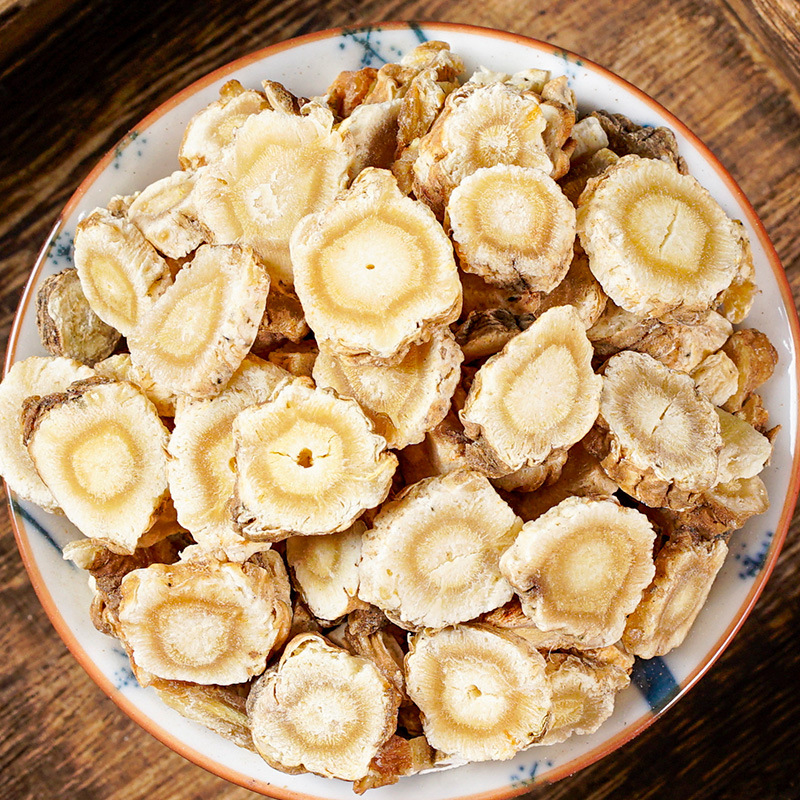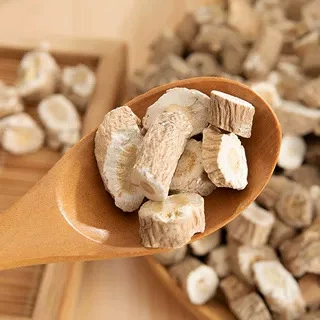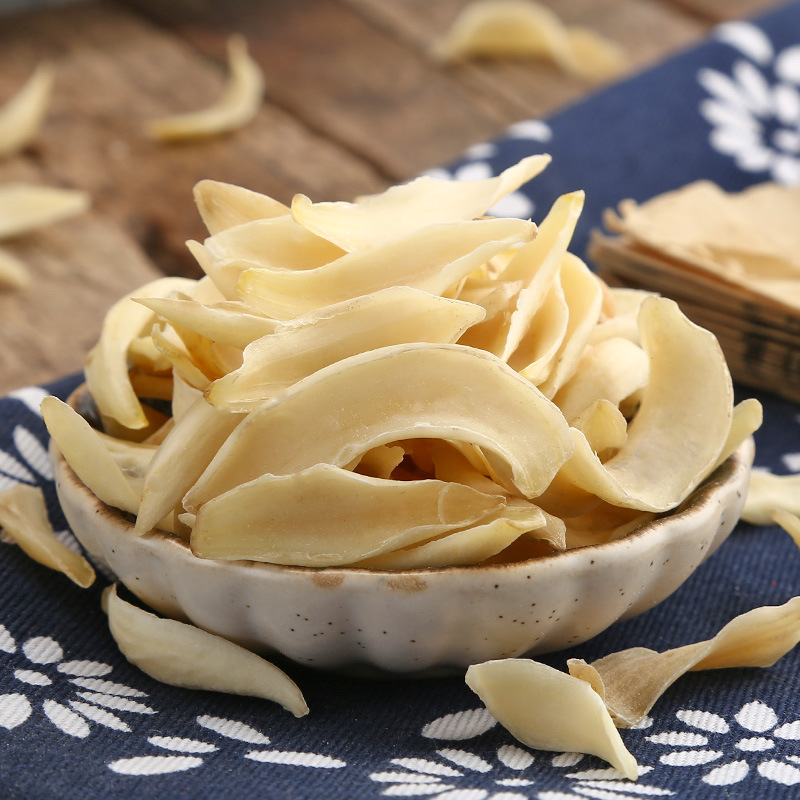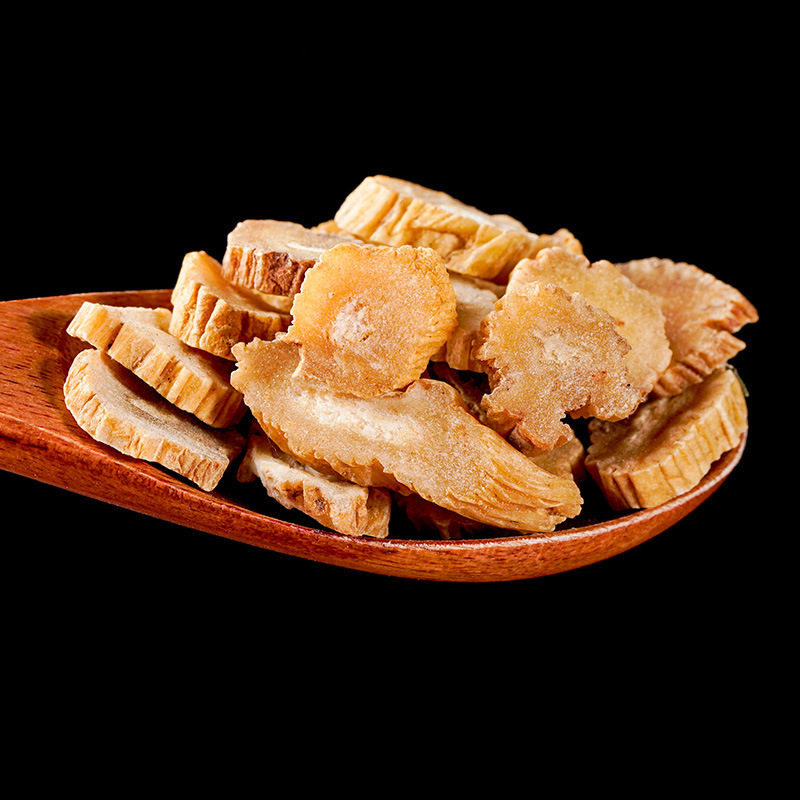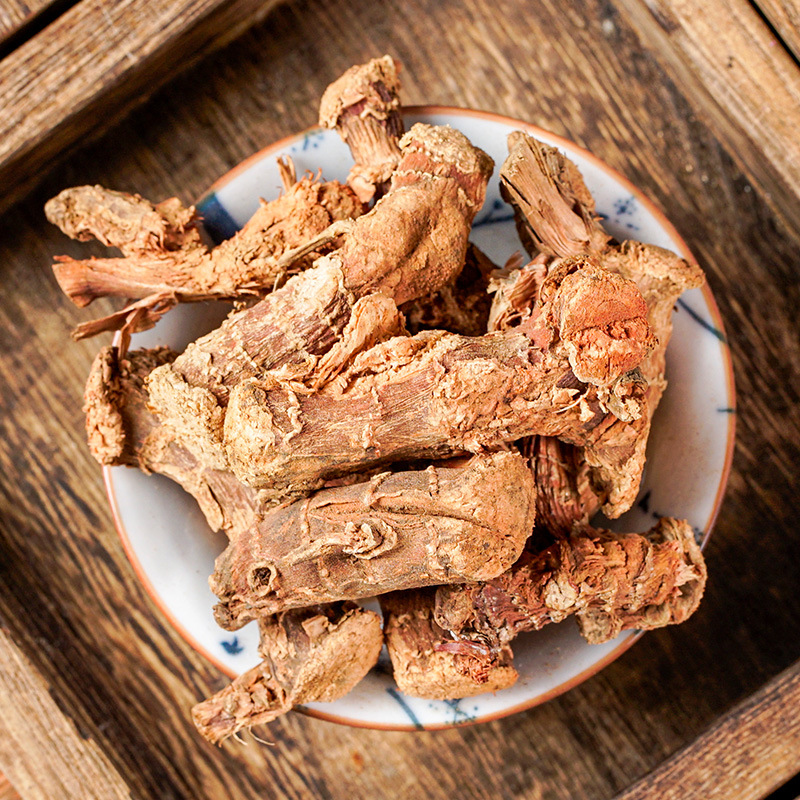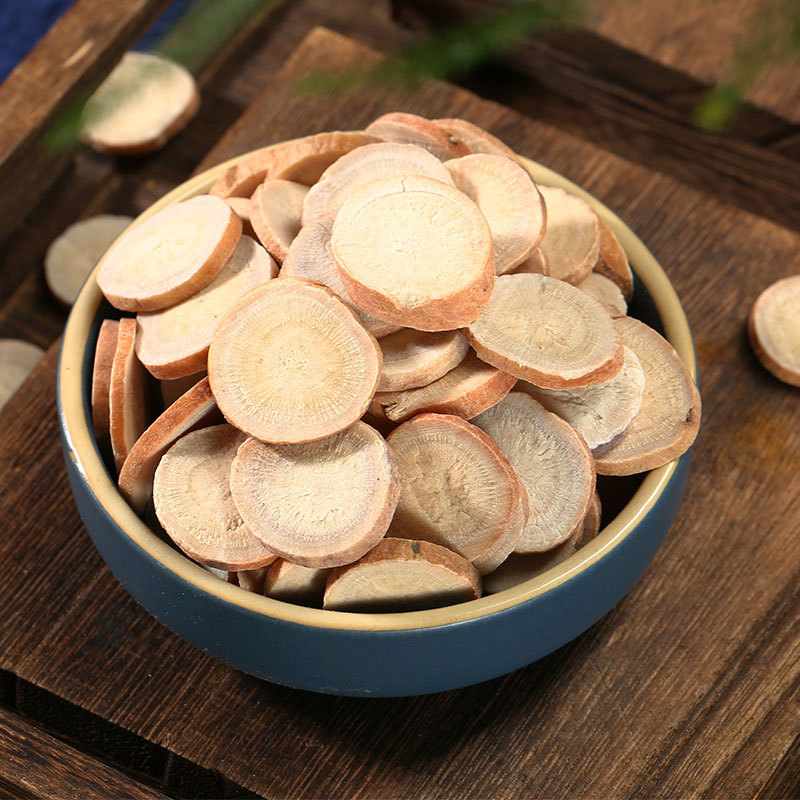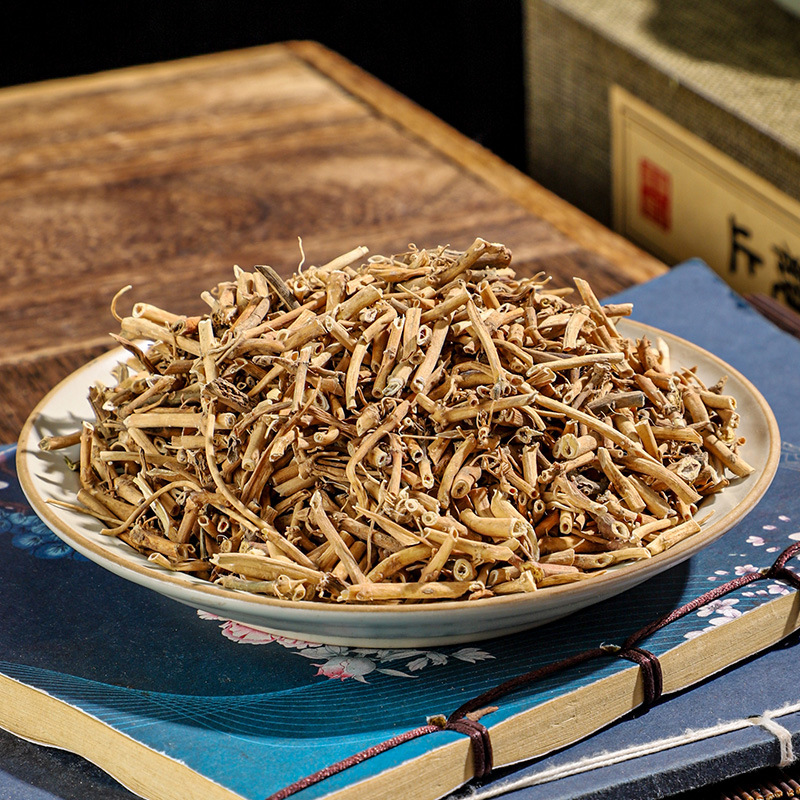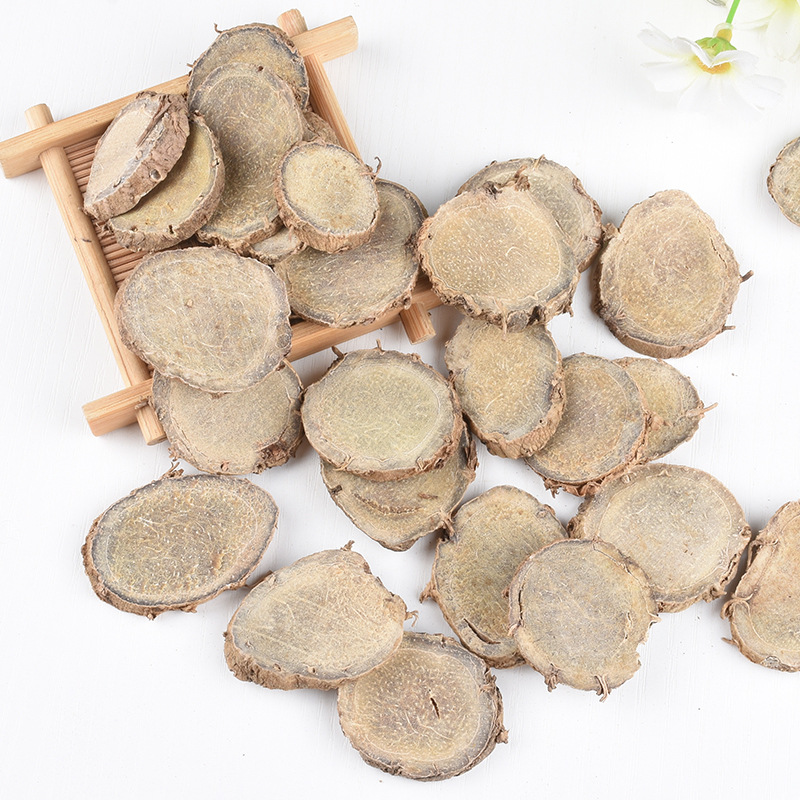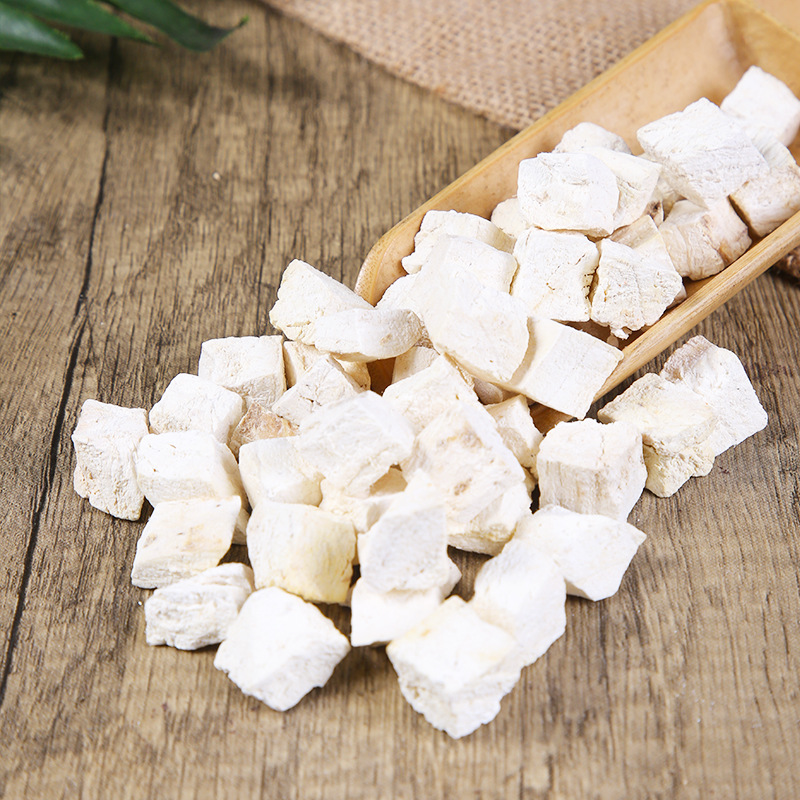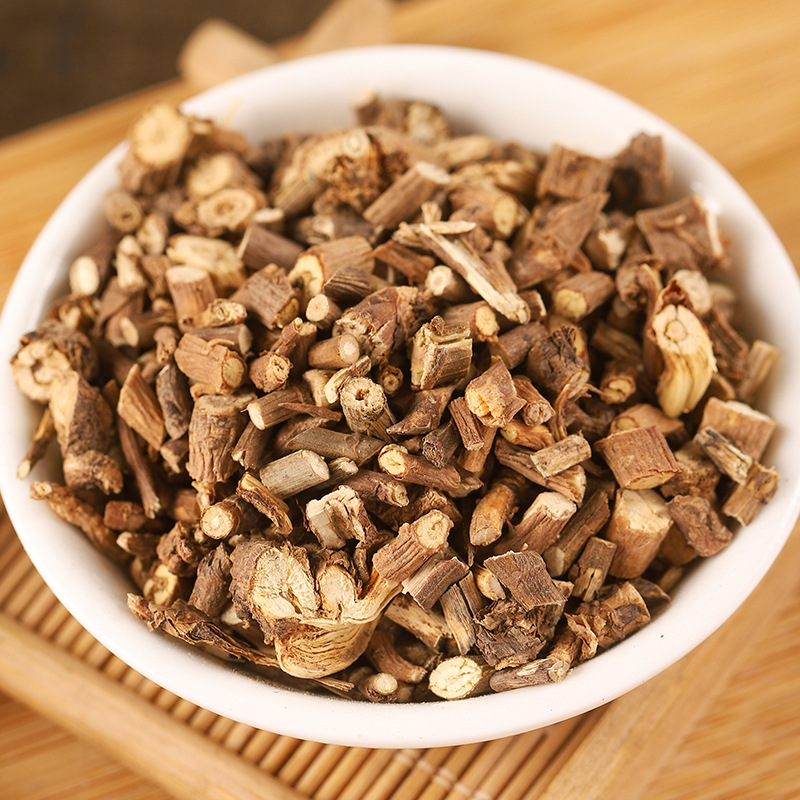Pagoda Tree Flower, also known as Huai Mi, refers to the flower buds of the deciduous pagoda tree (Styphnolobium japonicum) of the legume family. It is cultivated in many regions across northern and southern China. The buds are harvested in summer when they are fully formed or beginning to open, then dried in the sun to remove impurities. It is commonly used raw or stir-fried.
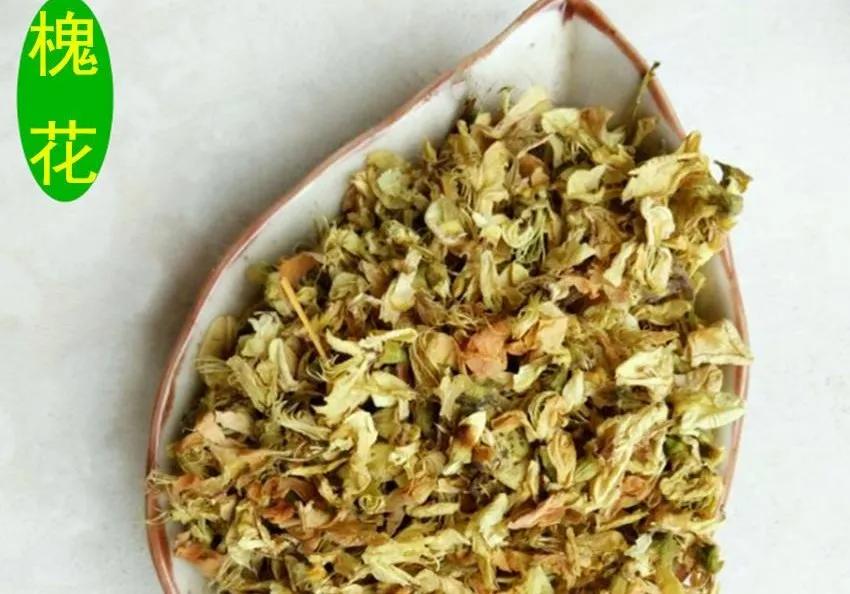
I. Efficacy and Applications
- •
Da Ming Ri Hua Zi Ben Cao: "Treats five types of hemorrhoids, heart pain, red eyes, kills intestinal parasites and heat, and addresses skin wind as well as intestinal wind with bloody diarrhea and red or white dysentery." - •
Zhen Zhu Nang: "Cools the Large Intestine." - •
Ben Cao Gang Mu: "When stir-fried until fragrant and chewed frequently, it treats loss of voice and throat obstruction. Also treats vomiting of blood, nosebleeds, and abnormal uterine bleeding." - •
Ben Cao Bei Yao: "Enters the blood level of the Liver and Large Intestine to cool the blood. When blood is cooled, yin is naturally nourished. Treats red eyes due to wind-heat, dysentery with red or white discharge, five types of hemorrhoids with intestinal wind, and various types of bleeding such as vomiting and uterine bleeding."
II. Combination and Application
- 1.
For Various Bleeding Conditions: Pagoda Tree Flower, with its cooling and bitter descending properties, clears heat from the blood level. It is suitable for bleeding due to heat in the blood, especially bleeding from the lower body. For hemorrhoidal bleeding, it is often combined with Sanguisorba Root (Di Yu) in formulas such as Huai Hua San. For coughing up blood or nosebleeds, it is commonly combined with herbs like Hairy Vein Agrimony (Xian He Cao), Cogongrass Rhizome (Bai Mao Gen), and Arborvitae Leaf (Ce Bai Ye). Classical Formulas: - •
Pu Ji Fang: "For persistent nosebleeds, combine equal parts of Pagoda Tree Flower and Cuttlefish Bone (Wu Zei Gu). Half is used raw, half stir-fried, then ground into powder and blown into the nose. For persistent vomiting of blood, char Pagoda Tree Flower without carbonizing, add a small amount of musk, grind evenly, and take with rice water. For bloody stools due to intestinal toxicity, stir-fry fresh Pagoda Tree Flower, grind, and take with wine." - •
Sheng Hui Fang: "For persistent uterine bleeding in women, char Pagoda Tree Flower without carbonizing, grind into powder, and take with warm wine before meals." - •
Ben Jing Feng Yuan: "For intestinal or hemorrhoidal bleeding, combine with lightly stir-fried Arborvitae Leaf, grind into powder, and take with Mume Plum (Wu Mei) decoction. For intestinal wind with bleeding, wash and stir-fry Pagoda Tree Flower until fragrant, grind into powder, and take with Schizonepeta (Jing Jie) decoction."
- •
- 2.
For Symptoms Due to Liver Fire Flaring Upward: Such as dizziness, headache, vertigo, and red eyes. Pagoda Tree Flower clears Liver fire and reduces inflammation. In modern practice, it is often used to treat hypertension due to Liver Yang rising. When used raw, it effectively lowers blood pressure and improves capillary fragility. It can be used alone as a tea or combined with other herbs.
III. Dosage and Administration
- •
For cooling the blood and stopping bleeding, it is best stir-fried. - •
For clearing heat and lowering blood pressure, it is best used raw.
IV. Precautions
- •
Ben Jing Feng Yuan: "Its nature is purely cooling. Contraindicated in cases of cold deficiency without excess fire."
Appendix: Pagoda Tree Fruit (Huai Jiao)
- •
Ben Cao Bei Yao: "Bitter, cold, purely cooling. Enters the Qi level of the Liver meridian. Dispels wind-heat, moistens Liver dryness, cools the Large Intestine. Treats irritability, dizziness, hemorrhoidal bleeding, intestinal wind, genital sores, damp itching. Improves vision, stops tearing, strengthens teeth, darkens beard. Kills parasites. May cause abortion."

